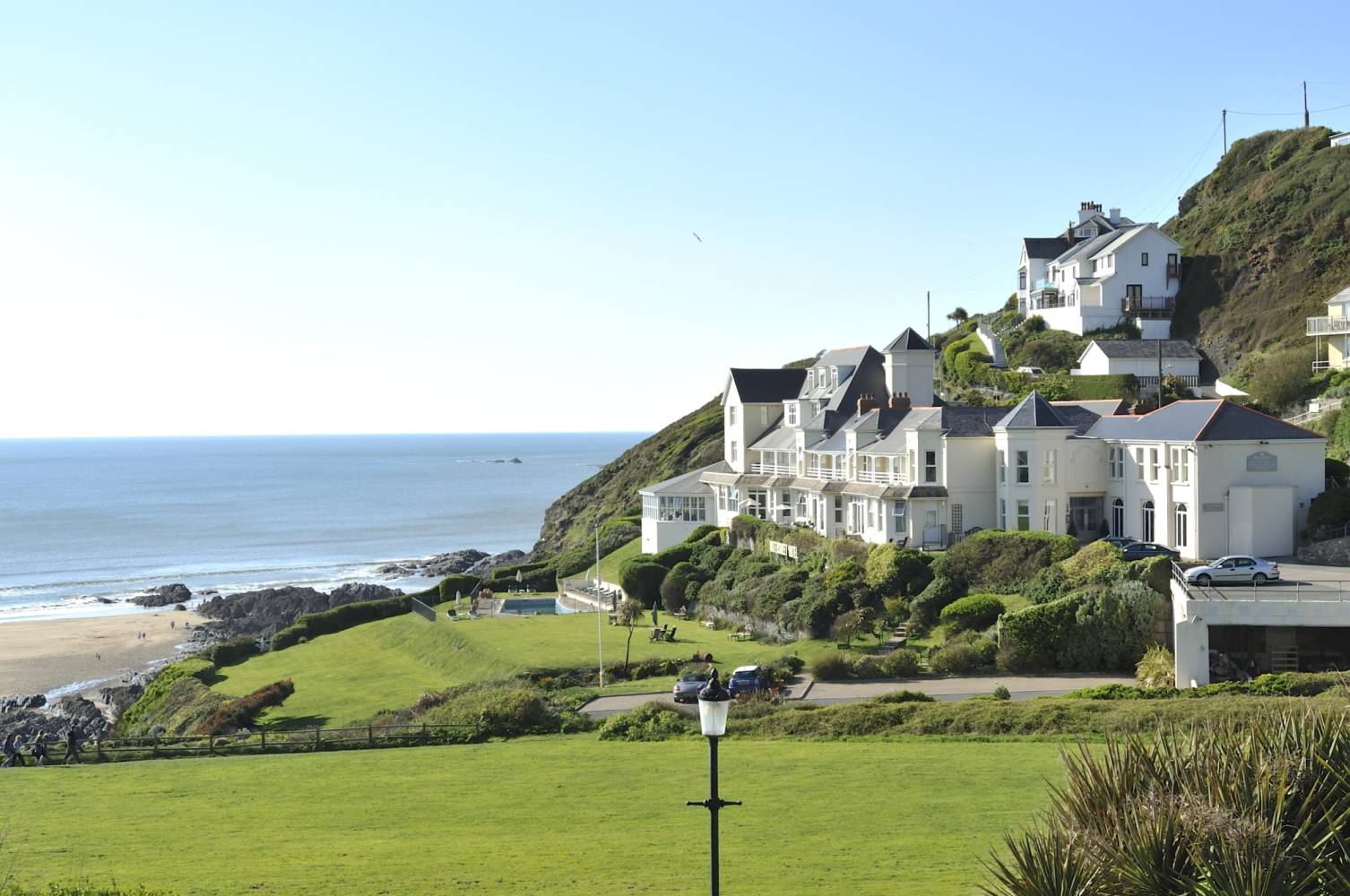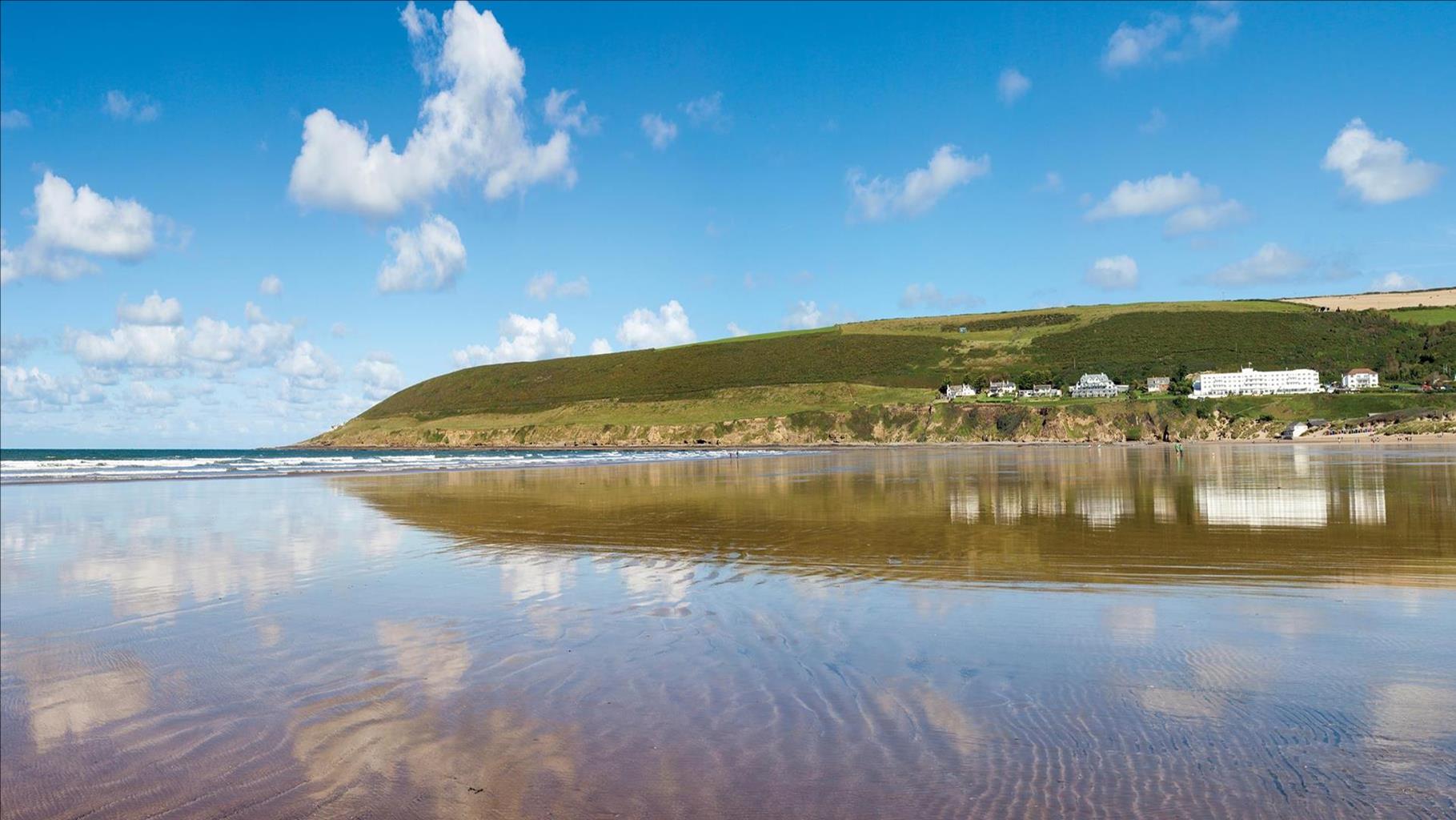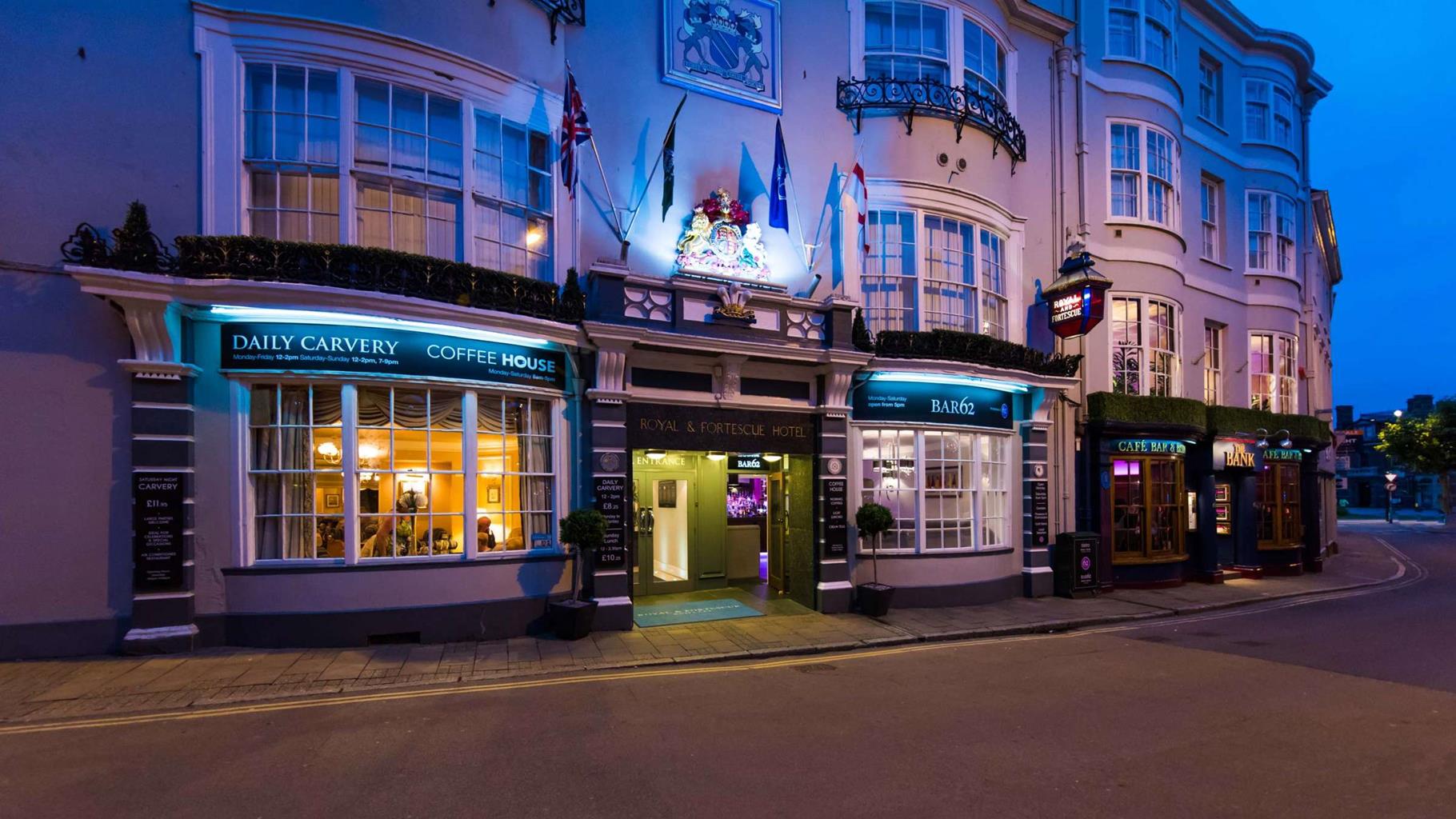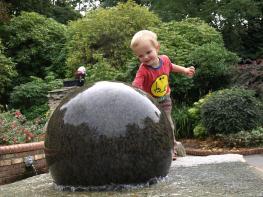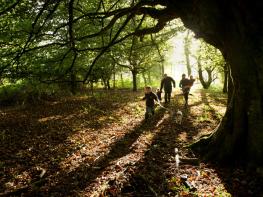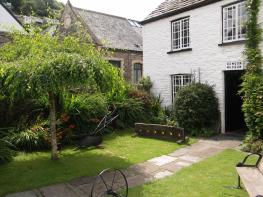Hele Valley Holiday Park is situated in a peaceful, secluded valley in close proximity to Hele…
South West Coast Path: Ilfracombe to Woolacombe

A tough walk along spectacular cliffs awash with wildflowers, culminating in a round of craggy Morte Point
8 miles (12.9kms)
About the walk
Ilfracombe is a large, mainly Victorian resort with some Regency and Georgian terraces and a smattering of contemporary buildings thrown in over recent years. Originally a fishing village (mainly for herring), and then an important local naval port – the harbour, now used mainly by pleasure craft, was formerly the most important refuge on the northern coasts of Devon, Cornwall and Somerset – the town’s fortunes as a holiday resort were significantly boosted by the arrival of the railway in 1874.
The ancient mariners’ chapel of St Nicholas on Lantern Hill above the harbour acted as a lighthouse for centuries and now sits in slightly uncomfortable juxtaposition with the sculptor Damien Hirst’s controversial 66ft- (20m-) high Verity, installed on the harbourside in late 2012.
Today’s route passes the lovely Tunnels Beaches, their bathing pools exposed at low tide and visible from the route during Point 2. In 1836 Welsh miners were employed to dig six tunnels through the slate cliffs, when a bath house was built at the entrance and a small sea-water pool was heated.
The little settlement at Lee Bay nestles in the lovely and secluded ‘Fuchsia Valley’, so named because there were once whole hedgerows of flowers. Many fuchsias still grow here.
Walk directions
From the car park entrance turn right on Broad Street to find the 18th-century Royal Britannia Hotel, patronised by Lord Nelson and the novelist Henry Williamson, who lived nearby. Bear left in front of the Sandpiper Inn along Capstone Road, then turn right on Capstone Parade. Round Windy Corner and continue along the back of grey Devonian slate Wildersmouth Beach.
Pass the Landmark Theatre (Tourist Information) on the seaward side, immediately bearing left up steps (at a Coast Path ‘pointing finger’ sign). Walk through the top of Runnymede sub-tropical gardens overlooking Emmanuel Church and the Ilfracombe Museum, on the site of the laundry for the enormous Ilfracombe Hotel, built in 1897 and demolished to make way for the Landmark. Turn right along the coastal road (Granville Road) to pass above the Tunnels Beaches.
At a sign to Lee and Torrs Walk keep ahead on Torrs Road, at the end turning right onto The Torrs, where pathways were laid out in the 19th century. The path leads back to the cliff, from where it zigzags up to the highest point of the Seven Hills. This was once a private path for which walkers had to pay. Near the summit a short detour may be made to the viewpoint.
From this point the path is well signed along the undulating coastal hills all the way to Lee Bay. On reaching a track wide enough for vehicles turn right: this was the old road to Lee over Lee Downs and is easy to follow to the Blue Mushroom bungalow, where it becomes a tarmac lane that descends to Lee and meets the road opposite the derelict Lee Bay Hotel. A detour can be made up the road left to the 14th-century Grampus Inn, near which is the picturesque Old Maid’s Cottage.
Turn right and follow the lane behind the beach, passing an old mill and 17th-century Smugglers’ Cottage (toilets and path to The Grampus left). At low tide cross the left side of the beach and then Sandy Cove to regain the Coast Path via steps at Damage Hue. The lane ascends steeply.
Fork right at the National Trust sign for Damage Cliffs. The path is easily followed, with a couple of very steep descents/ascents, to the lighthouse at Bull Point. The original lighthouse was replaced by an automatic one in 1975 after landslips threatened to carry it away.
Hug the coast past lovely Rockham Bay and round Morte Point, so-named for the many deaths it and the infamous Morte Stone have caused by shipwreck. Strong tidal currents can be seen swirling off the Point.
Descend towards Woolacombe, passing Grunta Beach below Mortehoe, so-named after a shipload of pigs ran aground! Pass Barricane Beach, renowned among Victorian shell collectors. From here the route follows the side of the coastal road, bearing right past the grounds of the Woolacombe Bay Hotel towards the Marine Drive (the old military road) car park, backing on to the dunes.
Additional information
Undulating coast path, several steep ascents and descents
Coastal, cliff top
Under control at all times; unfenced cliffs and livestock
OS Explorer 139 Bideford, Ilfracombe & Barnstaple
Pay-&-display car parks in Ilfracombe and Woolacombe
Ilfracombe, Lee Bay, Woolacombe
<p>Follow Coast Path footprints set into pavements through Ilfracombe; steep ascent out of Lee Bay</p>
WALKING IN SAFETY
Read our tips to look after yourself and the environment when following this walk.
Find out more
Also in the area
About the area
Discover Devon
With magnificent coastlines, two historic cities and the world-famous Dartmoor National Park, Devon sums up all that is best about the British landscape. For centuries it has been a fashionable and much loved holiday destination – especially south Devon’s glorious English Riviera.
Close to the English Riviera lies Dartmoor, one of the south-west’s most spectacular landscapes. The National Park, which contains Dartmoor, covers 365 square miles and includes many fascinating geological features – isolated granite tors and two summits exceeding 2,000 feet among them.
Not surprisingly, in Dartmoor the walking opportunities are enormous. Cycling in the two National Parks is also extremely popular and there is a good choice of off-road routes taking you to the heart of Dartmoor and Exmoor. Devon’s towns and cities offer stimulating alternatives to the rigours of the countryside.
Nearby stays
Restaurants and Pubs
Nearby experiences
Recommended things to do
Why choose Rated Trips?
Your trusted guide to rated places across the UK
The best coverage
Discover more than 15,000 professionally rated places to stay, eat and visit from across the UK and Ireland.
Quality assured
Choose a place to stay safe in the knowledge that it has been expertly assessed by trained assessors.
Plan your next trip
Search by location or the type of place you're visiting to find your next ideal holiday experience.
Travel inspiration
Read our articles, city guides and recommended things to do for inspiration. We're here to help you explore the UK.


